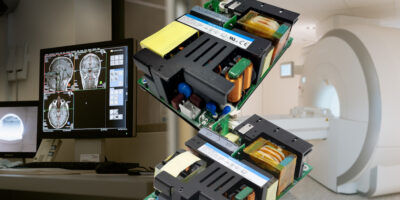The LOF450 and LOF550 have been added to Mornsun’s LOF series of medical and industry standard power supplies. They are available from Relec Electronics in industry standard packages and on short lead times.
The two medical approved models expand the LOF series of very high power density, open frame AC/DC converters by Mornsun. The whole series of low cost, reliable AC/DC converters is characterised by its thermal design, meeting the latest regulatory standards and availability on very short lead times.
The new LOF450 series has a universal AC input of 90 to 264V AC and accepts 127 to 373V DC input. Output ranges from 12 to 48V.
The 450W AC/DC converters operate at -40 to +70 degrees C and measure 127 x 76.2 x 38.5mm (5.0 x 3.0 x 1.5 inches) making them suitable for use in confined spaces.
Models in the 550W LOF550 series have the same universal input and output ranges and temperature range. Dimensions are 127 x 76.2 x 38.5mm (5.0 x 3.0 x 1.6 inch).
Both the LOF450 and LOF550 series have double or reinforced insulation, EMC and safety performance, says Relec. In addition to meeting IEC/EN/UL62368, GB4943, IEC/EN60335, IEC/EN61558, IEC/EN/ES60601, they are EN60601 2xMOPP and UL/EN62368-1-approved.
Target applications are industrial, LED, street lighting control, electricity, security, telecommunications, ‘smart home’ and medical environments.
The open frame models in both series are also available as perforated case (-C) or perforated case with integrated fan (-CF) models.
Relec Electronics is a specialist in power conversion and display products, representing leading brand names including Mornsun in power conversion alongside Bel Power, Chinfa, Cotek and Premium with key display partners, Digiwise and RockTouch.
For over 40 years, Relec Electronics has worked closely with key suppliers and specialises in a wide range of industry sectors, including automotive, industrial, transportation, instrumentation and defence.
A team of dedicated engineers is ready to support customers throughout the design process.
The company carries stock of all standard modules and accessories for next day delivery.
Relec’s team of specialist advisers can refine an initial specification for a given application to include bespoke features to meet the needs of a particular design or project.
In December 2020, Relec Electronics became been a UK subsidiary of Gresham Worldwide.







